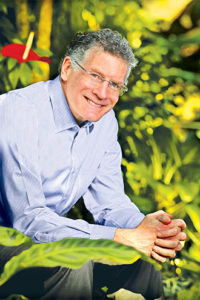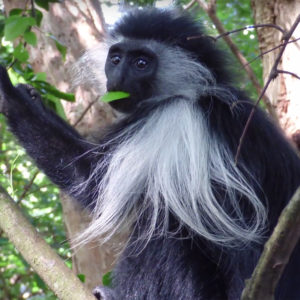Improving habitat for endangered zebras in Kenya.
Studying the microbiome of human-biting ticks in the eastern United States, and how it impacts the spread of disease.
Planning a St. Louis-based “carbon garden” as a model for urban bioenergetic carbon capture and storage.
These are just a few of the projects funded by the Living Earth Collaborative, which today announced a new round of financial support to initiate new, collaborative research and conservation projects with partners across the St. Louis region.

“We are very excited with the fabulous portfolio of projects linking together researchers from throughout Washington University and the St. Louis community, and taking place in areas from north Saint Louis to the plains of Africa and the rainforest of South America,” said Jonathan Losos, director of the Living Earth Collaborative and the William H. Danforth Distinguished University Professor in Arts & Sciences.
“These grants build on the nine grants awarded a year ago that have already begun to produce substantial research and conservation outcomes,” Losos said. “We’re particularly pleased this year to fund work involving faculty from the Brown School, the Sam Fox School of Design & Visual Arts, the Washington University School of Medicine in St. Louis and the McKelvey School of Engineering – as well as Arts & Sciences and the Tyson Research Center.”
“These grants clearly indicate the breadth of interest in biological diversity spanning the entire university community.”
The Living Earth Collaborative is a center for biodiversity built from a partnership among three leading institutions in the study of plant and animal science – Washington University, the Missouri Botanical Garden and the Saint Louis Zoo.

Solving the genetic mysteries of the colobus monkey
Its mission is to celebrate the diversity of living organisms and promote further understanding of the ways humans can help to preserve the varied natural environments that allow plants, animals and microbes to survive and thrive. The center exists as a hub that facilitates interdisciplinary research among scholars across a wide range of fields.
New research in biodiversity is all the more urgent in light of recent studies about the fate of species around the world.
In May 2019, a United Nations panel issued an alarming report that revealed that nature is declining globally at rates unprecedented in human history. The rate of species extinction is accelerating, with grave impacts on people around the world now likely.
“Our collaborative – with great scientists at all three institutions and others in the St. Louis area working together – can move us forward in two ways: One way is to work both locally and around the world to figure out what species are endangered; the second is to use that knowledge to determine what needs to be done to protect and conserve them,” Losos recently told Washington magazine.
In addition to the three local flagship institutions, researchers from the University of Missouri-St. Louis and Saint Louis University are among those who will participate in new Living Earth Collaborative-sponsored projects next year.








